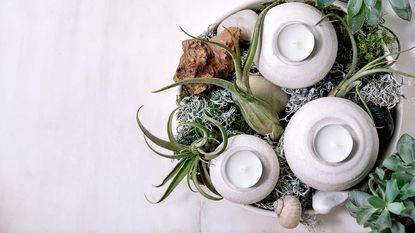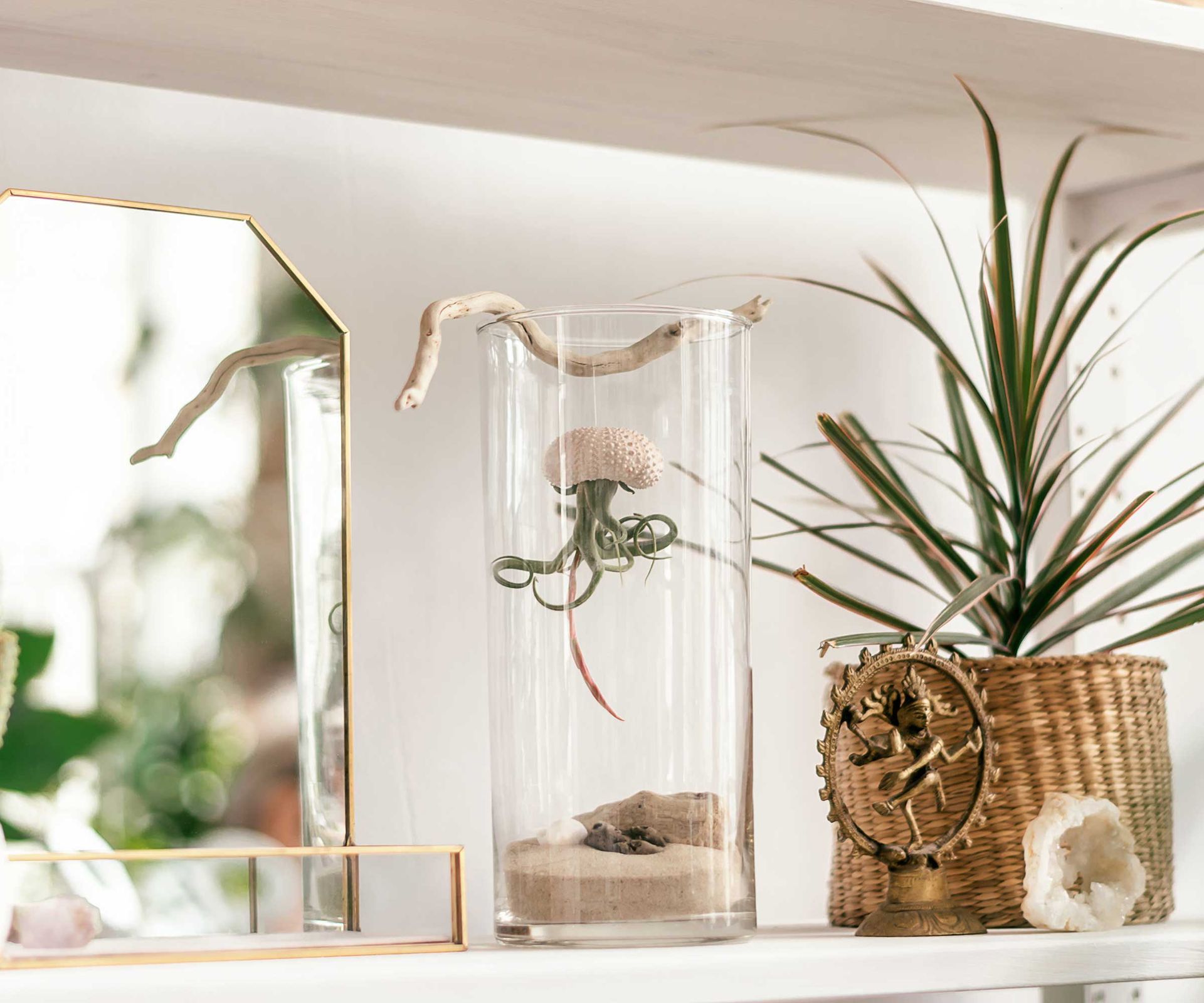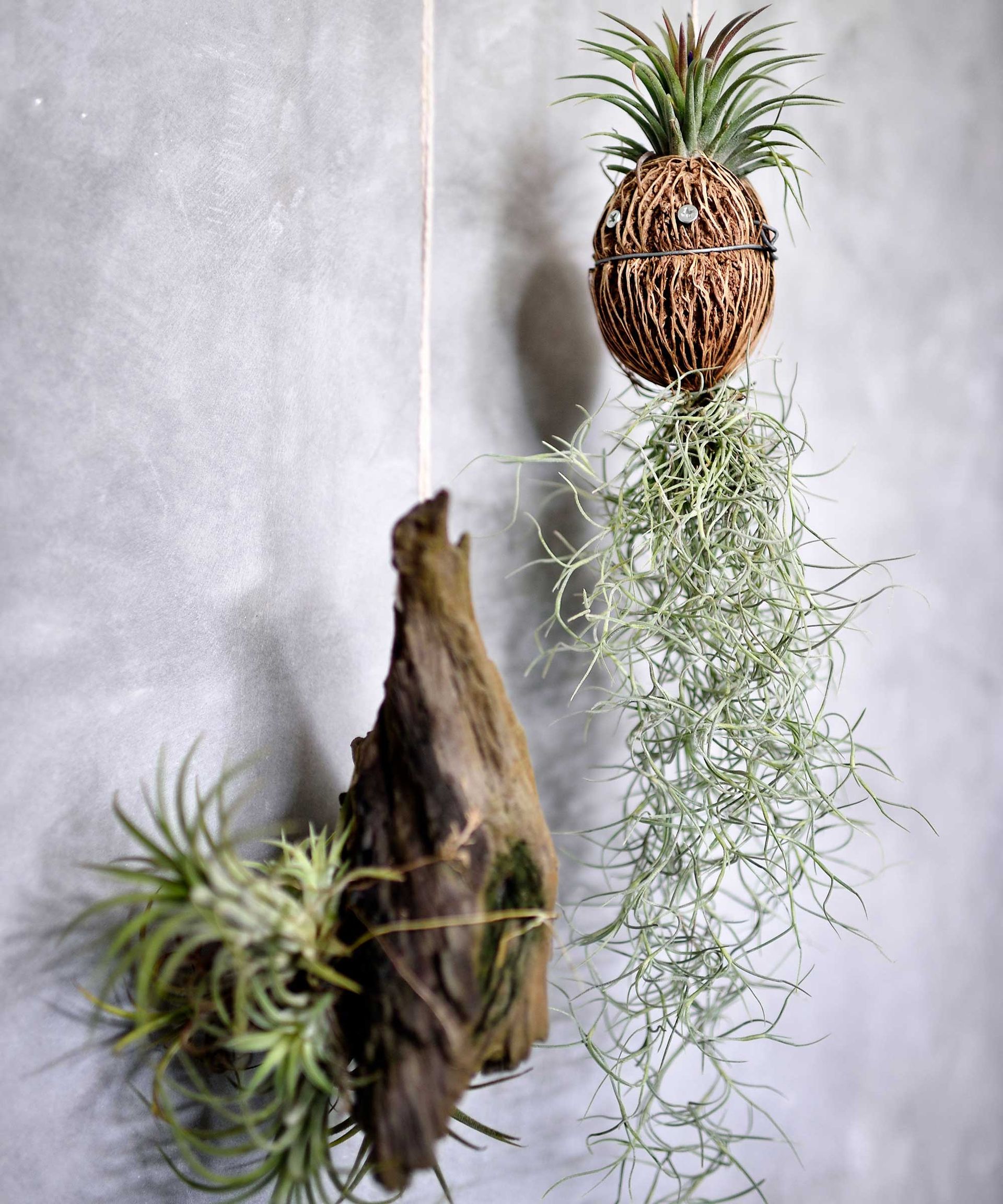Why is my air plant turning brown? 5 reasons and remedies
Browning leaves on an air plant are a sign that something is wrong, so discover the causes and quickly nurse your plant back to health
- (opens in new tab)
- (opens in new tab)
- (opens in new tab)
- Sign up to our newsletter Newsletter


Despite their name, air plants can't survive on air alone, and if you find your air plant turning brown, it is a sure sign it is struggling and action needs to be taken.
Natives of Mexico and South America, these wonderful plants – otherwise known as Tillandsia – comes in many colors and forms, and are a joy to have around the home. Although easy to look after, they require a little care and attention, with access to air, light, warmth, and water the crucial considerations.
Air plants have become among the most popular indoor plants in recent years, whether added to hanging planters or 'aeriums'. But browning leaves will soon turn these unique, eye-catching plants into sorry specimens. 'Don't fret, however, as if you catch the damage early enough then you can help your air plant to recover,' advises Lindsay Pangborn, plant expert at Bloomscape (opens in new tab).


Lindsay Pangborn is a Plant Expert at Bloomscape, a modern garden center that delivers plants directly from the greenhouse. She received a horticulture degree from Ohio State University, and lives and gardens in central Ohio. With 15 years of green industry experience, she's keen to share her knowledge and make people more comfortable with plants and plant care.
5 reasons your air plant is turning brown
So, what are the reasons for your air plant turning brown? While they are among the best low maintenance indoor plants, that doesn't mean you can neglect them. Nor will any plant, however low maintenance, survive if it doesn't enjoy the right conditions.
Browning leaves or tips of leaves are quite common with soil-free tillandsias and there are five key causes for this.
1. Irregular watering
In the wild, air plants derive most of their moisture from natural causes, such as rain and high humidity levels – which is why they are such an excellent choice as a bathroom plant or kitchen plant, as more humidity is created in these rooms.
'When placed in homes, it is therefore critical for them to have a consistent watering schedule. Signs of stress from irregular – or inadequate – watering sessions include dry, brown leaf tips. Air plants need to be watered every 1 to 2 weeks, depending on the species type,' says Lindsay Pangborn.
Learn how to water an air plant and keep to a regular watering schedule. When watering indoor plants, including air plants, there are a number of methods you can employ, but Lindsay recommends the soaking method.
That said, do not immediately soak a struggling air plant. First mist it for a couple of days so that it revives a little, to avoid any stress from a sudden change in conditions, and then soak it.
Incorrect watering can also be the cause of other houseplants failing, such as a pothos turning yellow, so review your watering habits of all houseplants at the same time.
2. Inadequate draining after watering
'Due to the way the leaves of an air plant funnel excess moisture towards the center of the plant, it’s very important to allow ample drying time of the plant while upside-down after a soaking session. When not properly drained, trapped moisture can cause the center of the plant to rot,' explains Lindsay Pangborn.
You will need to cut away the soft leaves and allow the plant to dry out thoroughly before watering or misting it again.
This is equally one of the main reasons for a snake plant turning yellow – adequate drainage is key to healthy plants.

3. Too much direct sunlight
'Air plants typically prefer to receive bright indirect light, which mimics their natural growing environment underneath the canopy of shade trees,' explains Lindsay. For this reason, they are among the best indoor low light plants.
'I recommend placing them within a few feet of an east-facing window or a few feet away from a west- or south-facing window. Avoid exposure to direct sunlight, which can cause scorching that looks like tan-colored patches on their leaves,' adds Lindsay.
Because they are not pure sun seekers, air plants also make good winter houseplants.
4. Inadequate air circulation
'Without proper air circulation, air plants are very susceptible to fungal leaf spots and rot, which show up as soft, brown, irregular spots or patches,' says Lindsay.
This can be the same reason for an aloe plant turning brown.
'Ensure your air plant is placed in an area that receives ample air circulation – an enclosed container or terrarium is not suitable for these plants,' Lindsay adds.
While they need ample air circulation, if air plants are placed close to an air conditioning vent, then they are likely to dry out quicker and might need watering more regularly than those placed in more humid environments.
5. Over fertilization
While in spring and summer you will give many of your houseplants a little boost with a generic plant food or fertilizer, the manufacturer's recommended dosage can be too much for air plants and be the cause of their leaves browning.
If this is the case, then stop fertilizing for several months, and when you restart, use a much lower dosage of fertilizer – such as a quarter of the general recommended amount. You can also find specific, low-nitrogen air plant fertilizers, available at Amazon (opens in new tab).

How do you revive a brown air plant?
The methods you use to revive a brown air plant will depend on the cause of the air plant turning brown in the first place.
If the cause is overwatering, or inadequate drainage, as mentioned above, you should carefully cut away any brown leaves and allow the plant to dry out fully before watering again.
If the air plant is turning brown because it is receiving too much direct sunlight, then move it to a position where it can enjoy indirect sunlight, but take care that it does not suffer stress from the sudden change in conditions – such as being placed too close to an AC vent or doorway where it will be in a draft.
What does an overwatered air plant look like?
An overwatered air plant will have signs of rot, 'which will appear as brown, soft patches around the base of the plant,' explains Lindsay Pangborn of Bloomscape.
The leaves can also turn brown, and look and feel soft and a little soggy, rather than dry.
Rachel is senior content editor, and writes and commissions gardening content for homesandgardens.com, Homes & Gardens magazine, and its sister titles Period Living Magazine and Country Homes & Interiors. She has written for lifestyle magazines for many years, with a particular focus on gardening, historic houses and arts and crafts, but started out her journalism career in BBC radio, where she enjoyed reporting on and writing programme scripts for all manner of stories. Rachel then moved into regional lifestyle magazines, where the topics she wrote about, and people she interviewed, were as varied and eclectic as they were on radio. Always harboring a passion for homes and gardens, she jumped at the opportunity to work on The English Home and The English Garden magazines for a number of years, before joining the Period Living team, then the wider Homes & Gardens team, specializing in gardens.
-
-
 Valentine's Day gift ideas 2023: 24 last-minute luxuries for your loved ones
Valentine's Day gift ideas 2023: 24 last-minute luxuries for your loved onesFrom the timeless beauty of a traditional bouquet of flowers to unique houseplants and fun sweet treats, our selection of Valentine's Day gift ideas will be sure to inspire
By Zara Stacey • Published
-
 Robert Pattinson just bought a Spanish Colonial-style home – with an interior designer past
Robert Pattinson just bought a Spanish Colonial-style home – with an interior designer past'The Batman's' Robert Pattinson and Suki Waterhouse purchased the Jeff Lewis-designed Hollywood Hills estate for $5.3 million
By Megan Slack • Published

